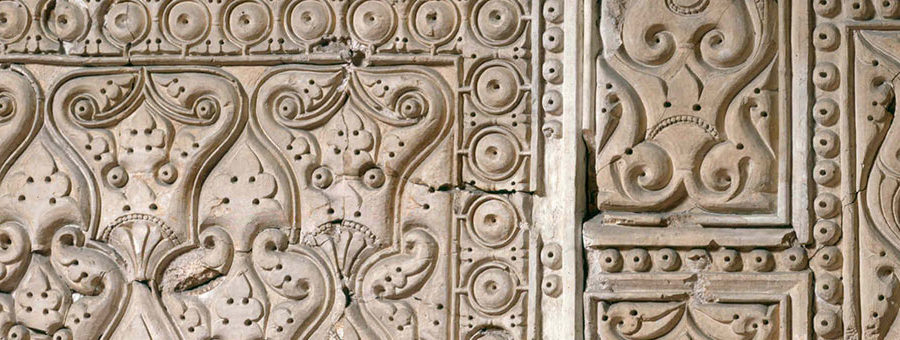ERNST HERZFELD SOCIETY
for Studies in Islamic Art and Archaeology
The Society is an association legally registered under the German designation Ernst Herzfeld-Gesellschaft at Bamberg, Germany. What follows is an English translation of the German statutes (Satzung), which are the only legally binding source. (Translated Vienna, February 7, 2006.)
STATUTES
1. Name and seat
§1 Ernst Herzfeld Society
The name of the Society remembers the great scholar Ernst Herzfeld who accomplished seminal research as an architect, archaeologist, art historian, and historian in the Near East and in Iran at the beginning of the 20th century. Still today he may serve as an incentive and an example.
The seat of the Society is Bamberg/Germany.
Aim and Purpose of the Society are:
a) to further scholarly research in art history, archaeology, and architectural history of the Islamic period;
b) to offer a fore to scholars and students of art history, archaeology, and architectural history of the Islamic period, in order to exchange, discuss and enhance scholarly knowledge and findings.
c) It is a further concern to cultivate international scholarly exchange and cooperation
d) and to get in touch with institutions of related disciplines.
2. Aim and purpose are realized by:
a) colloquies in order to keep a close contact and to exchange scholarly opinions;
b) editing contributions to the colloquies and other important papers;
c) supporting important research.
§2 The association is selflessly active; it does not primarily pursue own economic purposes.
§3 The means of the association may be used only for purposes defined by the statutes. Members do not get grants from means of the association.
§4 No person may be favored by expenses that are alien to the purpose of the association, or by disproportionately high remunerations.
§5 In case of the liquidation of the association, its fortune falls to the „Deutsche Orient Gesellschaft zur Förderung von Wissenschaft und Forschung” which has to use it exclusively for public non-profit, charitable or church purposes.
Means for realizing the tasks are:
a) annual contributions by the members;
b) donations.
3. Membership
a) All scholars and students who are active in the fields of art history, archaeology, and architectural history of the Islamic period as well as individuals, institutions, and corporations which are related to these fields and/or ready for collaboration, may apply to become members. The board of the Society decides on accepting an application for membership.
b) An honorary membership may be given by decision of the assembly of members to persons of particular merit.
4. Membership fees
The amount of membership fees is decided by the assembly of members.
Honorary members do not pay a fee.
5. End of membership
Membership ends
a) by voluntarily leaving the association,
b) after death o the individual, or liquidation of the corporation or institution,
c) after not paying financial obligations,
d) by unanimous decision of the board members.
The declaration of leaving the association shall be made in writing and be reported to the board at the end of the year.
6. Association bodies
The assembly of members and the steering committee constitute the bodies of the Society.
7. Steering Committee
The steering committee consists of one chairman, one deputy chairman, a treasurer, a secretary, and an advisory board. If needed the steering committee may be enlarged.
The advisory board consists of three individuals. Board members offer advice and suggestions to the steering committee and can participate in meetings of the committee.
The steering committee in the sense of §26 of the “Bürgerliches Gesetzbuch” [German civil law] is constituted by the chairman and the deputy chairman president. The Society is represented by the chairman or the deputy chairman.
All work of and for the association is conducted in an honorary capacity without salary.
The members of the steering committee and its advisory board are elected for two years in the general assembly. They remain in duty until a new board has been elected.
8. Assembly of members
The regular general assembly of members convenes every two years.
Duties of the assembly are:
– the obligatory annual reports,
– discussion of the reports,
– exoneration of the board,
– election of the board,
– election of a treasury auditor during the period of the elected board,
– planning,
– change of statutes.
Regular and irregular assemblies of members are called by the chairman or the deputy chairman. Invitations must be issued in writing at least two months before the proposed date. Assemblies of members are convened in different cities.
The assembly of members is chaired by the president or the vice-presidents, or else by a nominated member. Petitions for the agenda should have been received one week before the assembly. The assembly of members decides by simple majority. All members present are entitled to vote.
Minutes are taken and signed by the president or by the chairman of the assembly and the secretary.
The board is conducting the on-going works and is responsible to the assembly of members. The board decides by majority. Expenditures of more than 500 Euros must be also signed by the president in addition to the treasurer.
9. Management
The steering committee manages
führt die laufenden Geschäfte und ist der Mitgliederversammlung verantwortlich. Seine Entscheidungen werden mehrheitlich getroffen. Neben dem Kassenwart muss ab einer Ausgabensumme von über 500.-€ der /die Vorsitzende die Bankbelege gegenzeichnen.
Auflösung
10. Liquidation
A liquidation of the association must be decided by a two-third majority of votes in an assembly of members convened to that purpose.
Bamberg, December 21, 2005
This version of the Statutes adopted in 2011; correction confirmed at the General Assembly 3.7.2021.

